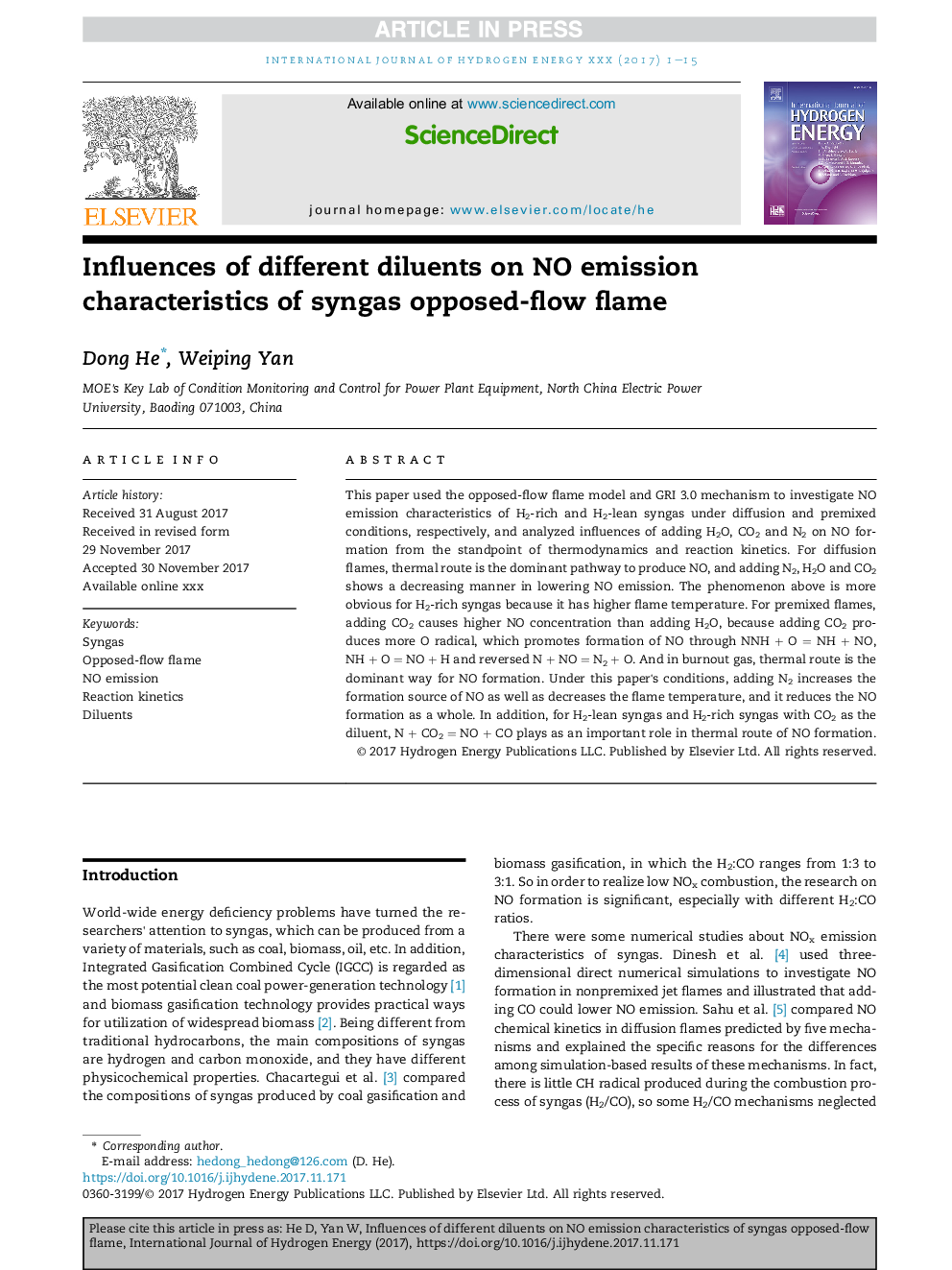| Article ID | Journal | Published Year | Pages | File Type |
|---|---|---|---|---|
| 7707939 | International Journal of Hydrogen Energy | 2018 | 15 Pages |
Abstract
This paper used the opposed-flow flame model and GRI 3.0 mechanism to investigate NO emission characteristics of H2-rich and H2-lean syngas under diffusion and premixed conditions, respectively, and analyzed influences of adding H2O, CO2 and N2 on NO formation from the standpoint of thermodynamics and reaction kinetics. For diffusion flames, thermal route is the dominant pathway to produce NO, and adding N2, H2O and CO2 shows a decreasing manner in lowering NO emission. The phenomenon above is more obvious for H2-rich syngas because it has higher flame temperature. For premixed flames, adding CO2 causes higher NO concentration than adding H2O, because adding CO2 produces more O radical, which promotes formation of NO through NNHÂ +Â OÂ =Â NHÂ +Â NO, NHÂ +Â OÂ =Â NOÂ +Â H and reversed NÂ +Â NOÂ =Â N2Â +Â O. And in burnout gas, thermal route is the dominant way for NO formation. Under this paper's conditions, adding N2 increases the formation source of NO as well as decreases the flame temperature, and it reduces the NO formation as a whole. In addition, for H2-lean syngas and H2-rich syngas with CO2 as the diluent, NÂ +Â CO2Â =Â NOÂ +Â CO plays as an important role in thermal route of NO formation.
Related Topics
Physical Sciences and Engineering
Chemistry
Electrochemistry
Authors
Dong He, Weiping Yan,
